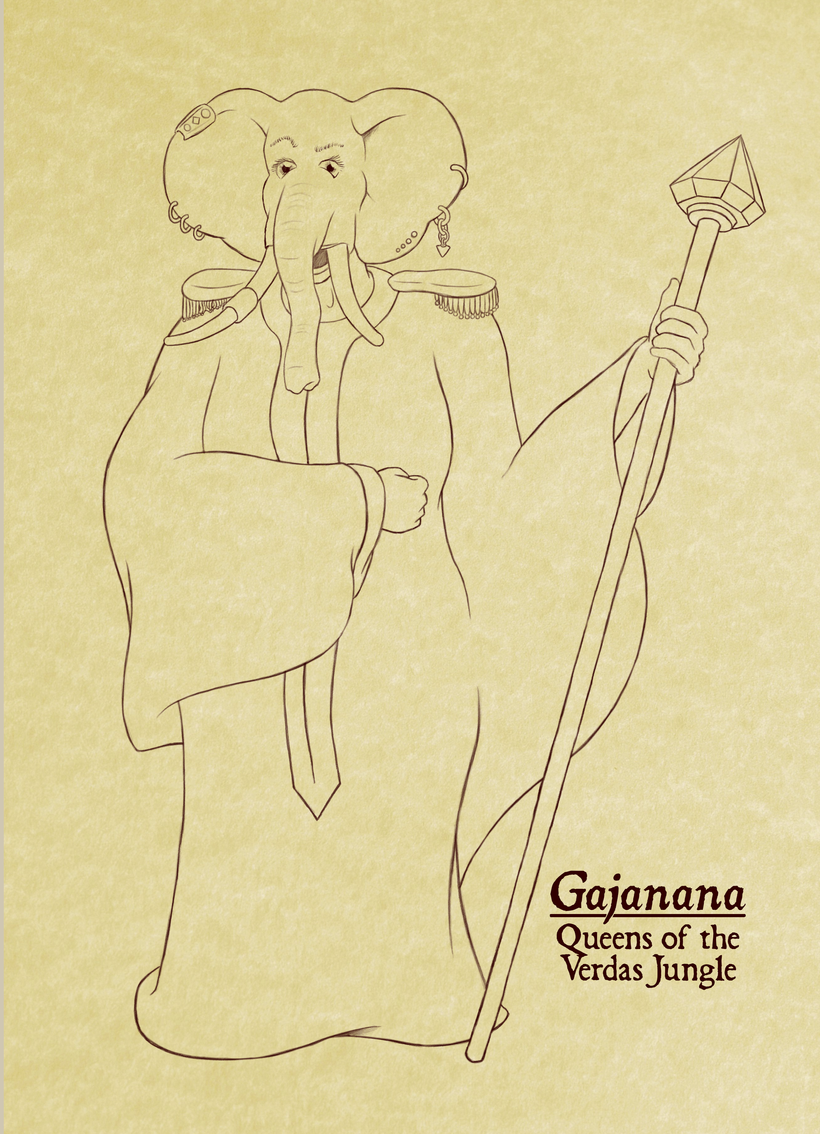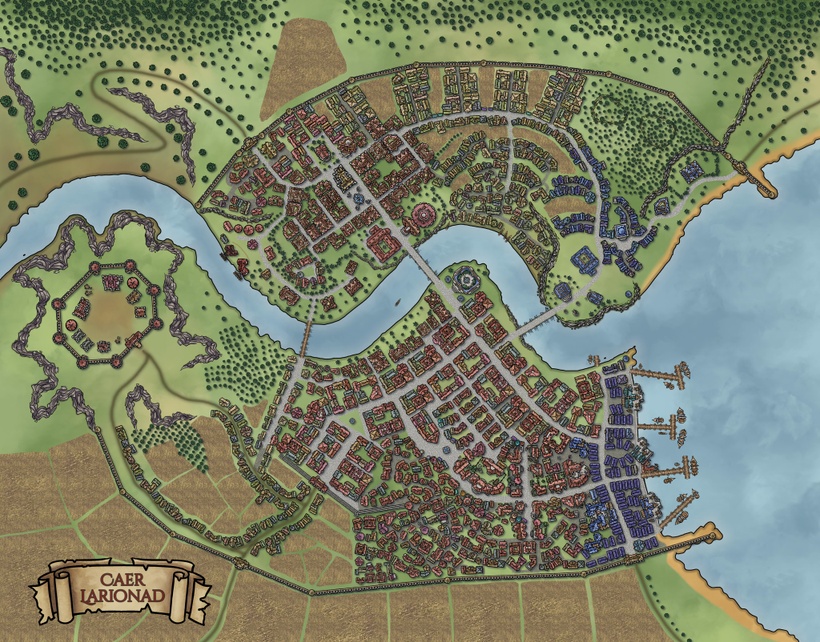In the end, it was hardly a contest: Gajanana won by a landslide, netting 76% of the vote. So let’s check out our first entry for one of the peoples of the Speaking Lands, the Gajanana.
—
Gajanana
This people is known for their large frames, grey skin, elephantine ears, tusks, and most especially their prehensile trunks. They are a proud, sometimes haughty, people, and tend towards insularity and clannishness. Gajanana hail almost exclusively from Verdas, although some members have travelled north and created small communities outside the jungle.
Their creation myths name the Jaws of Cuca as their point of origin, with their first queens building a palace and accepting tribute there. Gajanana settlement and culture has roughly centered on these earthworks for all of recorded history. Notably, these myths do not claim that the gajanana built the Jaws, a surprising omission in a corpus of myth with a strong tendancy towards braggadocio. While the Jaws are no longer a seat of political power, they remain a sacred site which gajanana visit to remember their people’s past.

Gajanana families tend towards a communal, matriarchal social structure centered around groups of sisters, their children, and all their mates. The eldest sister is deferred to in most family decisions but relies on the counsel of her younger siblings. When mates join a family through weavebonding, they entwine their trunks with their beloved, their beloved’s matriarch, and often the elder sisters of the family. This is not only an expression of their love and devotion to their mate but also a formal submission to the matriarchs’ authority. This is rarely a blind leap; mates may cohabitate with the family informally for years or even decades before weavebonding.
Young gajanana often leave their families after adolescence, visiting and travelling with associated and allied households. These may be extended family, business connections, or even simply neighbors and members of the same community. Some use this time to seek out mates or pursue an education with a friendly craftmaster. It is rare that these young people stray outside the gajanana community; the inevitable exceptions are a perpetual source of gossip and scandal. This period ends when they settle down with a mate or return to their own family.
It is said that gajanana begin planning their own funerals as soon as they can speak, and this is not far from the truth. Young gajanana are asked what they have selected as their final resting place in the same way one might ask after their favorite color. In youth, this is usually ‘alongside my mother,’ but over the course of a gajanana’s lifetime, the answer may change many times, accomodating new homes, changing families, and fondly remembered tableaus encountered during the pilgrimages of their youth. Many return to ‘alongside my mother,’ however, and extensive graveyards throughout Verdas accomodate the ashes of generations of gajanana. At the end of their lives, many gajanana retreat from public life and travel to their final resting place, awaiting their ends in quiet contemplation.
Although members of this people are spread throughout all the states of Verdas, the royalty of the Ivory Queendom are and have always been gajanana. The queendom enshrines gajanana as a superior race destined to rule, with a duty to protect and shepherd their lessers, a doctrine referred to as Gajaprassidha. This sentiment has spread throughout Verdas; while most individual gajanana assume their superiority as a matter of course, many non-gajanana also esteeem the wisdom and guidance of gajanana. This esteem can even border on a sort of quasi-mystical veneration. Consequently, gajanana are commonly found in positions of power in government, religion, and trade.
—
From the start, Speaking Lands has been a thoroughly self-indulgent project, and the Gajanana are hardly an exception. My wife, you see, is a big fan of elephants, and on the off chance that I ever got to play this game with her, I wanted to make sure there was a character option she’d enjoy playing. Thus, the Queens of Verdas, the wise and powerful Gajanana. As with every aspect of this project, though, the gazetteer format knit this self-indulgent lark into the rest of the setting and really made them something special.
But now it’s time to see what entry we’ll check out next week. The following four entries were referenced in the Gajanana entry, so which one shall we turn to from here?
